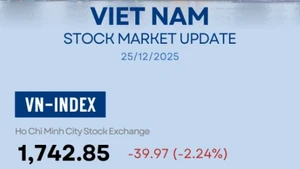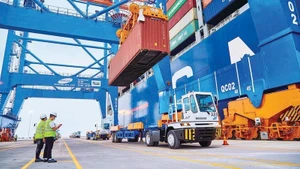Enterprises strive to find new markets.
In the third and fourth quarters in 2024, the Vietnam Textile and Garment Group (Vinatex) is expected to export its first orders of fire-resistant fabrics and clothing to Indonesia, India, the Middle East, and the US.
According to Le Tien Truong, Chairman of the Board of Directors at Vinatex, these products could experience very rapid growth, but this will depend largely on the policies of each country. These are specialised products which are not entirely like those Vinatex has produced in previous years.
Truong noted that these items have high technical requirements as well as legal and copyright aspects; they are not conventional fashion products. The collaboration with Coast Group (the UK) aims for a revenue target of 2-2.5 million USD, with the goal of potentially doubling this amount every year over the first five years.
According to experts, niche products such as fire-resistant clothing and fabrics have clearer growth potential and less competition compared to conventional items. Therefore, domestic textile and garment enterprises pioneering niche markets with fire-resistant products are highly commendable and open promising opportunities given the broad market potential. It is crucial for enterprises to actively invest in infrastructure, equipment, and human resources, as well as to advance towards mastering technology and production processes.
As a leading group in the textile and garment industry, Vinatex has recently made significant efforts to boost textile and garment exports by seeking new markets and producing new products to meet both domestic and international demand.
According to General Director of Vinatex Cao Huu Hieu, most garment enterprises have secured enough production orders through the fourth quarter of 2024, which is the peak season for Christmas and Tet (Lunar New Year) orders. It is forecast that the textile and garment export turnover of Vietnam in 2024 will increase by 8-10% compared to 2023.
These positive signals, in addition to the recovery of the global economy and a rebound in consumer spending, are also attributed to efforts in expanding new export markets such as Africa and India. Proactively seeking new customers, especially in niche markets, is considered a key factor for textile and garment enterprises to maintain stability in the current period.
After experimenting with complex and small orders, Garment 10 Corporation will continue to focus on technically demanding orders and flexible deadlines this year. Choosing challenging orders helps the enterprise more easily find new orders and partners in global markets.
Regarding new markets, Pham Van Viet, Chairman of the Board of Viet Thang Jean Co., Ltd. (VitaJean), shared that since the COVID-19 pandemic, Vietnam’s garment exports to Russia have experienced significant growth. Vietnamese garment products are of high quality and match the tastes and fashion trends in the Russian market. This is an extremely favourable time for Vietnamese textile enterprises to strengthen cooperation with Russia in this sector.
Opportunities for 2024
According to the Ministry of Industry and Trade, it is forecasted that the export of textile and garment products in Vietnam will recover well in the coming months. The reason is that the third quarter is the peak period for textile and garment exports in Vietnam. Additionally, most garment enterprises have secured enough production orders through the third quarter of 2024 and are continuing negotiations for contracts through the fourth quarter of 2024 — the peak season for Christmas and Tet orders.
 |
| Enterprises are striving to explore new markets. |
Furthermore, a recent survey by the US Fashion Industry Association on the competitive advantages among countries exporting textiles to the US shows that Vietnam scores higher than China and Bangladesh as businesses trend toward shifting suppliers away from China. Thus, in the long term, Vietnam’s textile sector is expected to continue expanding its market share in this area.
The Ministry of Industry and Trade noted that Vietnamese textile and garment enterprises benefit from geographical advantages, large port systems, and the ability to produce a diverse range of high-value products such as suits, winter coats, and swimwear with diverse designs and fast delivery. However, in the long run, if other countries catch up with production capabilities, Vietnam's textile industry will face significant challenges.
Additionally, textiles and footwear are sectors with a high "openness" as exporting 70-80% of production, making them highly dependent on and vulnerable to global market fluctuations. Diversifying export markets and avoiding “putting all eggs in one basket” is a sound strategy which the Ministry of Industry and Trade has been implementing for many years.
Specifically, through monthly trade promotion meetings, the Ministry has directed and coordinated with Vietnamese trade offices abroad to support enterprises in exploring and finding customers, especially in markets with free trade agreements.
Environmental protection is an issue that textile and garment businesses must also prioritise. Companies need to focus on selecting environmentally friendly materials with recycling capabilities, aligning with the circular economy trend. This sector faces numerous challenges, including the implementation of extended producer responsibility for waste management, carbon border adjustment mechanisms, Germany's supply chain due diligence law, and especially the shift from "fast fashion" to "sustainable fashion”.
Among these, green practices and sustainable development are competitive criteria required by major markets such as the EU, the US, and Japan, in addition to factors such as quality, price, and delivery time.
Despite the remaining challenges and issues, with many positive signals for the end of the year, Vietnam’s textile and garment sector hopes to meet its export target of 44 billion USD in 2024.
















